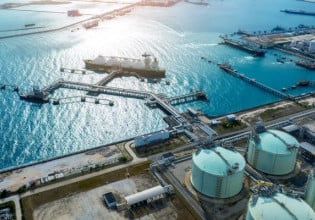Back to the Basics: Pressure Units and Measurements
What is pressure? Everybody knows about this important quantity, but how do you define it? How do you measure it? Where does it come from? In this article, we’ll learn about the basics of pressure.
Here’s a definition of pressure provided by Wikipedia: “Pressure is the amount of force applied perpendicular to the surface of an object, per unit area.”
In math terms, force can be considered to be the integral of pressure, in other words, the cumulative addition of the infinite vectors of force applied over the entire surface area.
A bicycle tire, a car tire, or the airflow developed by a large fan might all have the same pressure, but the total force for each would be much different. For this article, we’ll be talking about pressure, not force. Before jumping too far ahead, we need to cover some basics.
Basics of Force and Pressure
Force
The SI unit of force is the newton, which is the force needed to accelerate a 1 kilogram mass at a rate of 1 meter per second per second (one meter per second squared). To state the relationship mathematically:
$$1~N = 1 \frac{kg \cdot m}{s^2}$$
The definition sounds confusing. If the mass is not moving, wouldn’t the force be zero? The answer is that this is a potential force that would be activated when the motion actually started. The force could be a positive number, such as when the motion started, or a negative number if the motion is going backward. If the potential acceleration pulling down is gravity, then we call the force ‘weight’, even if you are solidly standing on terra firma. Step off a cliff, and you can bet that potential energy will start moving you in a hurry!

Figure 1. Pressure can be defined by many units, but always a force distributed over an area. Image used courtesy of Adobe Stock
One pound equals 4.44822 newtons. It is unlikely that you will encounter newtons outside of unit conversions or specialty measurements like torque and inertial moments. Instead, weights and payloads are often measured in kilograms (kg). Although it could be argued that kg and pounds are dissimilar kinds of units, it is well understood that they can be used in the same context. One kg is equal to 2.2 lb.
From now on, we’ll be talking about pressure, not force.
Pressure
The SI unit of pressure is the pascal. This name was added in 1971: it used to be just newtons per square meter. This makes it obvious that pressure could be similar whether it comes from a bike tire, an auto tire, or a large fan. One pascal equals one newton per square meter:
$$1~Pa = 1 \frac{N}{m^2}$$
One pascal is a small number, which is why most pressure is measured in kPa, or thousands of pascals.
In the US, the most common pressure unit is psi (pounds per square inch). One PSI equals 6,894.75 pascals. Actually, you should say, “One pound of force per square inch.”
$$1~Psi = 1 \frac{lb}{in^2}$$
Pressure can be exerted by solids as well as liquids and gasses. A solid might push with a force of, say, 5 pounds, but, if the total area was only 1/10 inch, the total pressure would be 50 pounds per square inch (50 psi). For the remainder, we’ll ignore solids.
Other units of pressure include:
Inches of water (InH2O): When subjected to pressure, a column of water will rise in a sealed tube. One inch of water column is equal to approximately 0.036 psi. This tiny value is quite useful because even pressures well below 1 psi will produce a large water column, accurately measurable with a sight gauge.

Figure 2. Liquid columns can measure pressure differences. If the top of Pa (reference) is sealed in a vacuum, the measurement P0 will be absolute pressure. If the top of Pa is open to the atmosphere, P0 will show gauge pressure. Image (simplified) used courtesy of Adobe Stock
Millimeters of mercury (mmHg): Being denser than water, 1 mm of Hg produces a pressure of 0.019 psi, or 133.32238574 pascals in metric units. One inch is 25.4 mm, so this means that the apples-to-apples equivalent of 1 inch of mercury would produce almost exactly 0.5 psi. This is still useful for measuring small pressure values, but doesn’t require a water column instrument that is many 10s of feet tall.
hectoPascal (hPa): 100 pascals.
Atmosphere (atm): one standard atmosphere (atm) is defined as 101,325 pascals (or 14.696 psi) Since atmospheric conditions vary slightly depending on the day, region, altitude, and weather, it is common to use columns of H2O or Hg to measure these tiny changes. The weight of the atmosphere at sea level produces 407 inH2O or 760 mmHg.
Bar: 100,000 pa, slightly less than 1 standard atmosphere.
Barye: This somewhat uncommon cgs unit equals 0.1 pascals. In other words, one pascal equals 10 barye.
Torr: almost 1 mm of mercury. The torr was intended to be 1 mm of mercury, but later revisions made it 1.000 000 142 inches of mercury (approximately!). One torr equals approximately 133.322 pascals.
Comparing Fluid and Gas Properties
Compressibility
Liquids are not compressible: they can’t change their size. Gasses are compressible: they can expand or contract.
These opposing properties lead to interesting benefits and applications. Since gasses expand, they will begin to exert a force on the load (like a cylinder/actuator) the moment they begin filling the chamber, leading to a very quick response. However, liquids, being incompressible, must fill the chamber fully, and then the pressure quickly begins to rise. The benefit of hydraulic is that any reverse force from the load cannot compress the fluid and it is very stable.
Volume
Boyle’s Law, which deals with gasses, not liquids, states that the pressure exerted by a given mass of an ideal gas is inversely proportional to the volume it occupies if the temperature and amount of gas remain unchanged within a closed system. This means that it is very easy to calculate the pressure that will be developed when a volume is compressed, or to determine the total volume of a gas inside a chamber when the pressure is known.
Transfer of Pressure
Pascal’s principle states that any pressure changes applied to the surface of an enclosed fluid are transmitted evenly throughout the fluid. As long as a valve is open, the pressure at all points is equal, save for the small pressure drops across components with frictional losses. This makes fluid system distribution very easy.

Figure 3. Two points in the same system, equal in height if both ends are open to air, will have equal pressure. Image used courtesy of Adobe Stock
Types of Pressure
Gauge pressure: For gasses, we most usually deal with gauge pressure. If no pressure has been added to the surrounding atmospheric value (or subtracted in case of a vacuum), the gauge pressure is zero. Gauge pressure could be plus or minus, down to -14.7 psi (adjusted to the local atmosphere).
Absolute pressure: The pressure when everything is absolutely empty. That, of course, is not possible under any normal conditions on Earth, although it might be close.
Atmospheric pressure, also called air pressure or barometric pressure: This is the pressure you can see from a barometer, which changes under many conditions.
Pressure differential: The difference between two pressures. A differential pressure gauge applies two pressures and subtracts the difference. The difference could be positive or negative, much like a voltage drop across a resistive electrical component.
Pressure and Force of Fluids
Fluid systems are certainly not something you can understand in the course of a single article, but understanding the relationships between properties and units, and knowing the background behind the use of common systems can help to clarify the matter somewhat.
Featured image used courtesy of Adobe Stock






